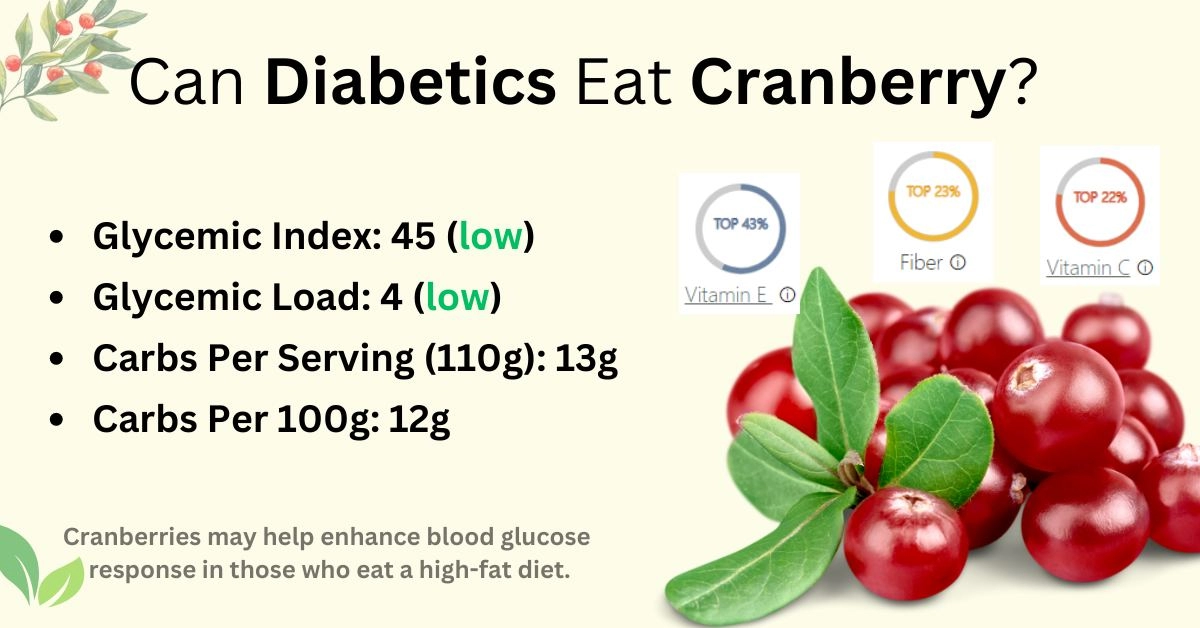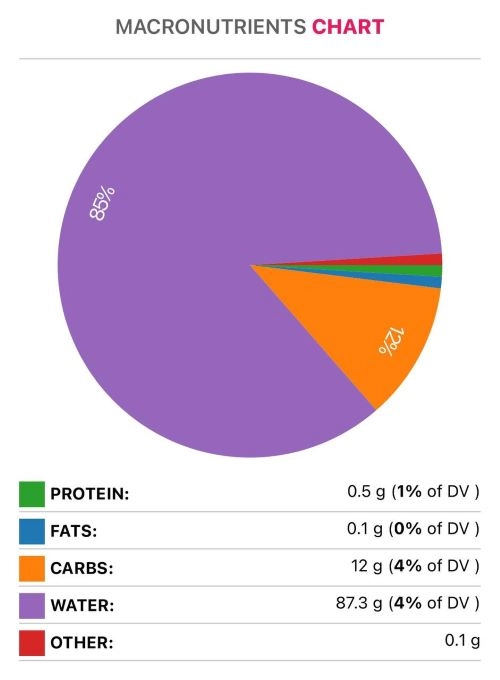Cranberry and Diabetes - Is It Good For Diabetics

Introduction
Diets designed for diabetics usually prevent glucose spikes and the consumption of large amounts of calories that mainly come from carbs and sugars.
Cranberries, being a fruit, have to be considered whether they are a good-to-go fruit for diabetes or not. In the section below, we will have the answer to the question.
Glycemic Index and Carbohydrates
The total amount of carbohydrates you consume can affect your blood sugar levels after you eat, so it is essential to track the number of carbohydrates you consume. Cranberry has a low carbohydrate content and low glycemic index. It provides 11.97g of carbs per 100g. The GI value of cranberry is 45, which is considered low GI.
This means cranberry consumption can't raise blood sugar levels, and according to research, its consumption can lower glucose levels in the blood.
Visit our Glycemic index chart page for GI values of 350+ foods.

Type 2 Diabetes
Research indicates that cranberries may increase insulin sensitivity in insulin-resistant people who are overweight or obese because of their high polyphenol content (1).
Another study suggests no significant differences after cranberry consumption in insulin, insulin resistance evaluated by homeostasis model assessment, lipid profiles, and blood pressure (2).
Overall, the consumption of cranberry appears to be beneficial in controlling blood sugar levels in type 2 diabetes (3).
One study shows that daily consumption of cranberry for three months lowered fasting blood glucose and lipid levels in people diagnosed with type 2 diabetes for 6–17 years (4).
Cranberries may help enhance blood glucose response in those who eat a high-fat diet.
In people with type 2 diabetes, cranberries have been demonstrated to lower the postprandial glucose response (5).
Cranberry contains a high amount of fiber: 3.6g per 100g. Cranberry falls in the range of the top 23% of foods as a source of fiber.
Fiber can help improve blood sugar levels by slowing the absorption of sugar. According to studies, a healthy diet that includes fiber-rich food can reduce the risk of developing type 2 diabetes (6).
References
- https://pubmed.ncbi.nlm.nih.gov/12580526/
- https://pubs.rsc.org/en/content/articlelanding/2017/fo/c7fo00900c#!divAbstract
- Critical Reviews in Food Science and Nutrition
- Can Cranberry Supplementation Benefit Adults With Type 2 Diabetes?
- https://pubmed.ncbi.nlm.nih.gov/28290272/
- https://pubmed.ncbi.nlm.nih.gov/19335713/
